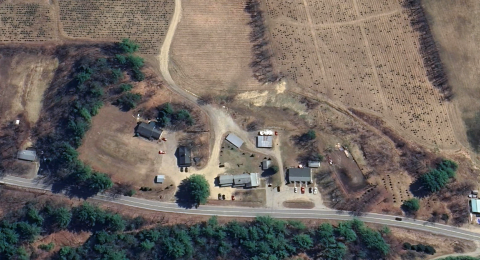A Walk Through History, Plymouth NH
Mike Ahern is a lifelong Plymouth, New Hampshire resident who’s served as selectman and chair of the Plymouth Planning Board. He is currently a Planning Board member and a member of the Housing Steering Committee.
I met up with Mike Ahern in August of 2023. He is one of the first people I talked to for this series on housing in New Hampshire. At the time, I had just finished reading Big House Little House Back House Barn, which I highly recommend and which helped me understand the foundations of our housing stock in the state and how our rural communities formed.
Mike’s farm, Glove Hollow Christmas Tree Farm, has been in the Ahern family for over a hundred years. It epitomizes the struggle that Big House Little House details: deeply diversified farms that had to operate on many levels to stay afloat, with families running them knowing how to make it through tough times.
Glove Hollow Christmas Tree Farm has an orchard and cider mill, apartments, and, of course, the Christmas trees. Mike told me that they used to have dairy cows, but even the cows ultimately couldn’t keep the farm going. Transitioning to Christmas trees had been the farm’s saving grace. The Christmas trees capitalized on tourism in the region, too, with the foliage train passing through the farm.
Renting apartments has always been part of the farm’s income. Mike is proud to be retaining tenants long-term. He said his dad had passed down the advice to keep rents reasonable so that everyday people can afford it. That way, he said, you know they’ll appreciate the place like you do and help keep it in good condition. And it helps build community to make sure people can stick around.
Switching to community engagement across the town, Mike was hopeful, but also realistic about the challenges. At that time, Plymouth had hosted a community forum and put out a housing survey. According to Mike, the survey was helpful, but it did not answer all the questions they had, and it would have been more reliable if more people had responded. In addition, Mike was particularly interested in hearing from out-of-towners, from people who worked in Plymouth or young people who might want to get a start in town, but who couldn’t afford to live in town as it is. The survey had seen decent results from this demographic, but there’s always a challenge in trying to connect with people who are not yet part of the community.
When I asked my final question, “What are you proud of?”, Mike invited me into his house, introducing me to his dog and spreading a map of Plymouth out on the kitchen island. “This is who I represent,” he said.
Bright red on the map denoted the zoning district Mike lives in, the Agricultural/Industrial district, which is unique in the whole state. Mike told me that, years earlier, there had been a proposal to increase the minimum lot size in the district.
At that time, he said, he knew that people in his neighborhood needed to be heard. He told me how he and his kids sat down at the kitchen table and hand-wrote letters to everyone living in the Agricultural/Industrial district, personally informing them of the proposed changes and inviting them to give their input on the proposed change. He was proud of how many of his neighbors came forward, and how, with their voices in the mix, the change did not go through.
Now, Mike said, the town was trying to reduce the buildable lot size in zones where it had been successfully increased earlier. In his eyes, the Agricultural/Industrial district had been wise to reject the more restrictive zoning, since allowing for development on smaller lots meant that more of the traditional agricultural land could be preserved while giving people a chance to build starter homes at a price that would be affordable for young people trying to get a start in town. Years earlier, his neighbors had done the exact same thing that the town was trying to do in other districts now.
At that point, I started to understand some of the hesitance that communities have about the changes the state is asking them to make. The current narrative seems to say: “Hey towns, you made bad decisions in the past, and that’s why you are struggling with housing now. You need to make these changes we’re telling you to make now.”
However, that message doesn’t consider that many towns have been following state guidance this whole time – but some of it has changed. Blaming towns for policy decisions that were endorsed by planners, advocates, and state-level policymakers, too, sews distrust in the state, and that’s a reason there may be suspicion around current initiatives and programs, even if everybody involved has always meant well.
From my conversation with Mike, I knew I wasn’t done with Plymouth. There was so much going on – outdoor recreation, the university, agriculture, the downtown area. On top of that, there were more community conversations coming down the line that would hopefully shed light on what Plymouth needed for the future.

